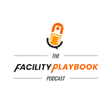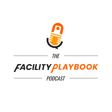
Strategic Facility Planning and Design
Sports facility design and management is a complex, ever-evolving field that requires careful planning and execution, and where poor planning can be costly. In this Episode, we'll explore various aspects of facility design and management, from cost-saving measures to technology integration and future prospects. Whether you're a facility manager or an enthusiast, this blog will provide valuable insights to enhance your understanding of this dynamic field.
Learn More about Facility Ally:
https://facilityally.com/
Learn more about VSR Design:
Be sure to subscribe here, and follow our social channels for more content
Instagram: https://www.instagram.com/yourfacilityally/
TikTok: https://www.tiktok.com/@facilityally
YouTube: https://www.youtube.com/@facilityally
Facebook: https://www.facebook.com/facilityally


